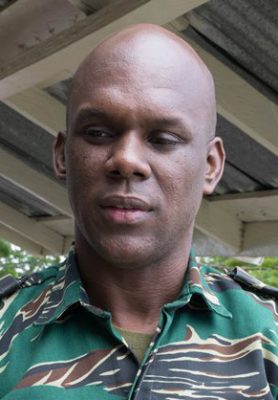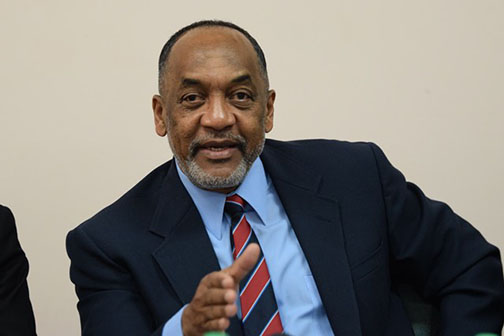With oil production estimated to begin in approximately six months, the Environmental Protection Agency (EPA) is moving to prepare an assessment that will identify the possible risks to Guyana should an oil spill occur and it is expected to take several months.
The risk assessment will help to form part of government’s National Oil Spill Response Contingency Plan, which Director-General of the Civil Defence Commission (CDC) Lieutenant-Colonel Kester Craig says is about 90% done and “will be in place before first oil.”
“There is need for a more detailed risk assessment and we have outlined it with the EPA and they are working on having the assessment done. This is because we want to be able to say ‘This area range here and here, this is what will be affected. If it involves mangroves, sea turtles, fishes, farms… whatever it is, we want to know and to plan accordingly,” Craig told Sunday Stabroek in an interview last week.

“We think also that oil spill plans cannot just be focused offshore because spills can be inshore and in the rivers. The probability for those are higher because you have several vessels traversing the rivers. Our plan is to take into consideration onshore and offshore,” he added.
Craig says that from simulation exercises, sensitive areas and locations that would be first affected have already been identified, but the CDC wants an actual assessment which will guide the actions to be taken in such an event.
“If something happens tomorrow, some of the assessments are already there apart from those that are required by EPA. There are those that are required by operators—as submitted by Exxon, by Tullow… for approval. They also contain information on sensitive areas and on general areas that will be impacted and that is data that can be used and that is data that we already have,” he noted.
But government wants its own risk assessment and it is the EPA that will provide that to the CDC. “The risk assessment aspect of it we have already dispatched to the Environmental Protection Agency because they are the agency responsible for doing the risk assessment. We have sent a letter, we have sent the guidelines and they are required to do the risk assessment,” Craig said.
The CDC is lead agency or competent national authority (CAN) in national emergency matters should an oil spill occur either offshore or onshore. The EPA, the Department of Energy, the Guyana Defence Force Coast Guard, the Protected Areas Commission, the Guyana Geology and Mines Commission, the Guyana Energy Agency and the Maritime Administration Department are support agencies and have their scope of works clearly defined in the response plan. “We have overall responsibility for large spills, in terms of coordination and all agencies work towards supporting the coordination efforts led by the CDC. All the other agencies will support and lead within their particular area,” Craig explained.
‘Getting the resources’
EPA Executive Director Dr. Vincent Adams told Sunday Stabroek that his agency received correspondence from the CDC about conducting the risk assessment and developing a plan but mobilising resources for the tasks has proven a hindrance. In addition, he said that the assessment will take time and he is not sure if it will be done by first oil but is confident that it will be done by June of next year.
“As far as the risk assessment is concerned, yes there has to be a risk assessment done. As part of the multi-agency support team to the CDC we received that request and are in the process of figuring out how we will be doing it, which would include, of course, getting the resources. This includes obtaining the necessary funding and procurement of qualified personnel or consultants since the EPA does not have the in-house expertise. This process could possibly take a long time to be completed,” he explained.
Asked what a “long time” meant, Adams said, “The whole process of obtaining funding, procuring personnel and then they doing the work, will take several months.”
He said that the outside of the risk assessment and the contingency response plans, the EPA has operators tied to agreements, which is designed to help lessen the impact of an oil spill. “Outside of the plan, the EPA has been issuing permits or authorisations to the developers to mitigate the risk of a spill in the first place. The permits have specific conditions with the intent of mitigating spills,” he said.
Craig feels that this is a safeguard not many persons know about or understand and it is for this reason that the CDC feels satisfied with the response mechanisms in place. He stressed that in addition to the operators, other countries have also committed to assisting Guyana should there be an oil spill here.
“Responding to oil spill is not a single agency response. It is a multiagency response. The major responsibility for oil spill lies with the operators. As part of the plan they have to show the mechanism they have to deal with a worst case scenario. We are satisfied with that. We use third party, there is no country, even the United States of America that has equipment to deal with the worst case type disaster. What they do is they employ, and we have been working with some of the third parties. For example, ExxonMobil employed what you call Oil Spill Response Limited and they have resources …and this is for a worst case scenario, based on a model that we have seen,” he said.
“As part of the approval processes, the oil companies are required to conduct exercises, emergency response drill sessions with the communities and before they go out in the communities and do their things, they have to come to the CDC. We discuss with them to identify the stakeholders, work with them to identify locations and we also work with them in keeping with the regional programme. We worked with Exxon about two months ago in Region One on an exercise and the residents were a part of it. Apart for being a part of it, they were given PPEs [Personal Protective Equipment]. So there are several residents with boots, helmets. There was also a session done with some fishermen and we have over 50 volunteers who are trained in oil spill response and also have equipment. Apart from that, more than 200 persons within the various government sectors have been trained in oil spill response,” he added.
The CDC also has a database with contacts for the volunteers and take them on drill whenever they go out on education and sensitisation exercises that they have been conducting in the regions. “The key thing for us is having those drills, having those exercises and having the testing of time people take to get out. Desktop is good but the actual drills are what is best and not just having them one now and the next sometimes next year and three years after. Consistency is what matters and what would help,” he stressed
From the ExxonMobil risk assessment model that was submitted to the EPA, an oil spill would “take several days to reach shore,” according to Craig, who noted that “most of the models show that some of it will be going to Trinidad but the biggest thing is containment.”
“The smaller scale response is that the companies are required to have the equipment. What the Government of Guyana is to prepare is that enabling environment for that response. They have to process equipment, they have to approve the use of dispersants the different types… They are dispersed by large airplanes that are designed for that kind of activity. There is no way that a government or country, especially a country like Guyana, can invest in those large 747s, to just be sitting there in the event to be deployed for an oil spill. Those things are done by companies in preparation [for] oil spills response and we are satisfied with those responses. That is the system that has worked internationally,” he said.
And apart from the operators, Guyana has agreements both bilateral with a number of countries and as a part of CARICOM to get regional support in the event of an oil spill. Craig says that this countries’ citizenry’s concerns could be somewhat assuaged with the knowledge that there is regional and international help. “
“What many of us don’t understand, too, is that we have the mutual agreement with CDEMA [the Caribbean Disaster Emergency Management Agency] that supports disaster response and if we need support from international bodies, if we need support from other CARICOM countries, like Trinidad and Tobago, [or] Suriname, based on the existing management system, they are required to support us. That is under an agreement article signed by CDEMA, signed in 1991. We have support from a number of countries, operators and agencies. We are satisfied [that we will be ready],” Craig said.










